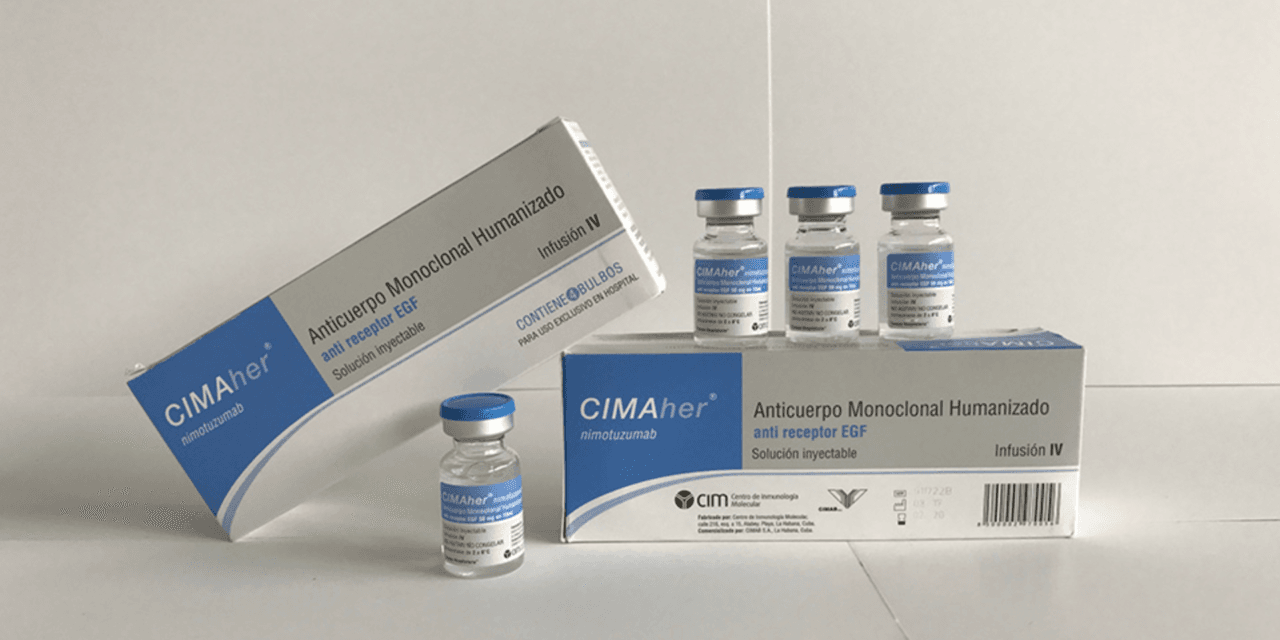1. Medicinal Product Name CIMAher® (Nimotuzumab) 2. What This Medicine Is & What It Is Used For CIMAher® is a humanised monoclonal antibody that targets the Epidermal Growth Factor Receptor (EGFR), a protein that plays a key role in the growth of many solid tumours. By blocking EGFR activation, it helps slow or stop tumour...
AllCardiovascularChild DevelopmentCuba’s AchievementsCubaHeal NewsDermatologyEducationEndocrinologyGeriatricGynecologyInternational CollaborationMedical (General)NeurologyOncologyOphthalmologyOrthopedicPsychiatrySubstance Abuse RehabilitationTravel InsuranceUncategorized
Nimotuzumab is a cutting-edge monoclonal antibody therapy designed to treat various epithelial cancers, including head and neck cancer, glioma, and non-small cell lung cancer (NSCLC). Developed with advanced biotechnology, Nimotuzumab offers a targeted approach to cancer therapy, minimizing side effects while maximizing efficacy. This document explores Nimotuzumab’s mechanism, clinical outcomes, and benefits, underscoring its role...
Vaxira (Racotumomab) is an innovative therapeutic vaccine developed to treat non-small cell lung cancer (NSCLC). This groundbreaking therapy, originating from Cuban research, targets a specific cancer cell marker, offering a novel approach to treatment. This document delves into the scientific basis, clinical efficacy, and numerous benefits of Vaxira, highlighting its potential in revolutionizing cancer treatment....
CimaVax is a cutting-edge therapeutic vaccine developed in Cuba, designed to treat non-small cell lung cancer (NSCLC). This vaccine targets the epidermal growth factor (EGF), a critical protein involved in cancer cell proliferation. CimaVax has garnered international recognition due to its unique mechanism of action, cost-efficiency, and promising clinical results. This document provides an in-depth...
HeberFERON is an innovative combination therapy developed in Cuba, designed for the treatment of basal cell carcinoma (BCC) and other types of skin cancer. This novel therapeutic approach combines two types of interferons—alpha-2b and gamma—providing a unique mechanism of action that enhances the immune response against cancer cells. This document delves into the scientific basis,...
Basal cell carcinoma (BCC) is a common type of skin cancer that arises from basal cells, which are responsible for producing new skin cells. This form of cancer typically appears on areas of the skin frequently exposed to the sun, such as the head and neck. Although BCC grows slowly and is rarely fatal, it...
Lung carcinoma is the leading cause of cancer-related death worldwide. In lung cancer, the healthy cell that becomes the tumor cell is in the epithelium lining the entire respiratory tree from the trachea to the thinnest terminal bronchiole. Symptoms may include cough, chest discomfort or pain, weight loss and less frequently hemoptysis (coughing up blood)....
Introduction Cuba has emerged as a global leader in cancer immunotherapy, pioneering therapeutic vaccines, monoclonal antibodies, and interferon-based treatments. With a strong emphasis on biotechnology and medical research, Cuban scientists have developed groundbreaking therapies that improve survival rates, minimize side effects, and provide affordable cancer care. This article explores CIMAvax-EGF, Racotumomab (Vaxira), Nimotuzumab (CimaHER), Interferon...
Head and neck cancers encompass a range of malignancies affecting areas such as the oral cavity, pharynx, larynx, and nasal passages. These cancers pose significant health challenges worldwide, with treatments often involving surgery, radiation, and chemotherapy. In recent years, Cuba has emerged as a leader in developing innovative therapies for head and neck cancers, leveraging...

